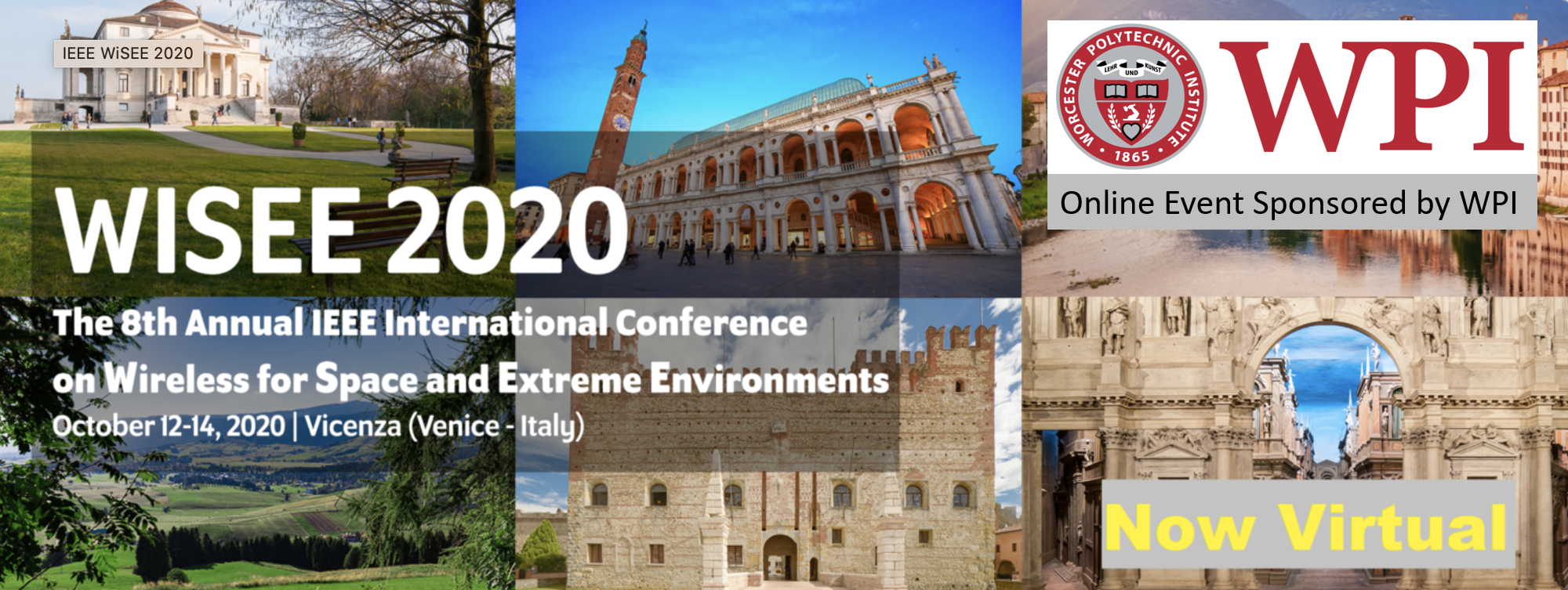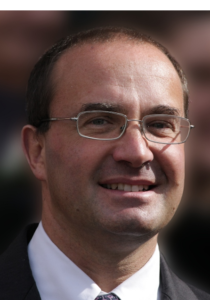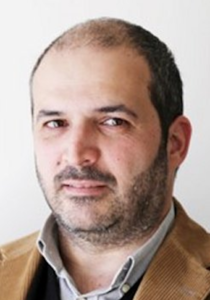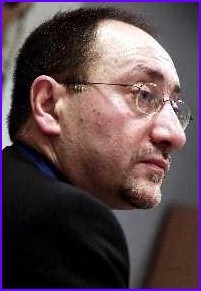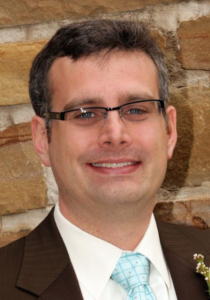Michele Zorzi
Information Engineering Department. University of Padova
Topic: Understanding the potentials and challenges of 5G mmWave
technologies for Public Safety networks
Abstract: Over the last ten years, the wireless research and industry communities have developed the fifth generation (5G) of mobile networks, currently being commercially deployed throughout the world. 5G networks are among the first to exploit the millimeter wave (mmWave) frequency bands for the access network, effectively introducing a 10x factor in the data rate achievable in cellular networks. At such high frequencies, indeed, there is a wide availability of spectrum that can be allocated to 5G services. However, mmWaves are affected by a higher path loss compared to their sub-6 GHz counterparts, and signals at such high frequencies cannot propagate through obstacles, thus decreasing reliability, which is a key element in public safety scenarios. In this talk, we discuss how first responders could benefit from the introduction of 5G mmWave communications in public safety networks, presenting the challenges and opportunities that have emerged from a three-year project funded by the U.S. National Institute for Standards and Technologies (NIST), in collaboration with New York University and the Austin Fire Department. We will describe how this technology can be introduced in highly mobile contexts (e.g., vehicular, aerial) that are of particular relevance for first responders operations, and which are the main engineering and design challenges we addressed to increase the reliability of such systems. Moreover, we will introduce the open source simulation tools developed as part of this project, to simulate mmWave cellular, aerial, vehicular scenarios, following the latest 3GPP specifications for 5G mmWave networks.
Biography: Michele Zorzi was born in Venice, Italy, on December 6th, 1966. He received the Laurea Degree and the Ph.D. in Electrical Engineering from the University of Padova, Italy, in 1990 and 1994, respectively. During the Academic Year 1992/93, he was on leave at the University of California, San Diego (UCSD), attending graduate courses and doing research on multiple access in mobile radio networks. In 1993, he joined the faculty of the Dipartimento di Elettronica e Informazione, Politecnico di Milano, Italy. After spending three years with the Center for Wireless Communications at UCSD, in 1998 he joined the School of Engineering of the University of Ferrara, Italy, where he became a Professor in 2000. Since November 2003, he has been on the faculty at the Information Engineering Department of the University of Padova. His present research interests include performance evaluation in mobile communications systems, random access in mobile radio networks, ad hoc and sensor networks, energy constrained communications protocols, and broadband wireless access.
Dr. Zorzi was the Editor-In-Chief of the IEEE Wireless Communications Magazine in 2003–2005, is currently the Editor-In-Chief of the IEEE Transactions on Communications, and serves on the Editorial Boards of the IEEE Transactions on Wireless Communications, the Wiley Journal of Wireless Communications and Mobile Computing and the ACM/URSI/Kluwer Journal of Wireless Networks. He was also guest editor for special issues in the IEEE Personal Communications Magazine (“Energy Management in Personal Communications Systems,” Jun. 1998) and the IEEE Journal on Selected Areas in Communications (“Multi-media Network Radios,” May 1999, and “Underwater Wireless Communications and Networks,” to be published in 2008). He is a Fellow of the IEEE.
Marco Lanucara
European Space Agency
Topic: The future of Lunar Communications
Abstract: This decade will witness a proliferation of missions to the Moon, including orbiters, ascent and descent modules, surface vehicles, each potentially supporting crewed operations. Such missions have very diverse communications requirements in terms of data rate, availability, latency, and will be operated by ground segments spread over multiple space agencies and commercial operators. The Interagency Operations Advisory Group (IAOG) took the task of defining a communications architectural framework based on projected needs, with an emphasis on ensuring full interoperability among space agencies and commercial operators.
A dedicated working group including representatives from IOAG space agencies was formed and acted during 2018-2019, leading to an architecture expressed through a comprehensive report. There were several constraints, sometime mutually conflicting, to be adhered to: 1) the communications architecture had to originate within solutions formulated in the Consultative Committee for Space Data Systems (CCSDS), however with a mandatory down-selection, to limit the variety of solutions to be supported and increase inter-operability; 2) the architecture had to take into account the parallel development of the Lunar Gateway, in the process of defining its own standard, however with a wider scope encompassing the international landscape of missions to the Moon; 3) the recommendations from the Space Frequency Coordination Group (SFCG) about frequency bands to be used had to be adhered to, with the same down-selection principle adopted for CCSDS; 4) new technology had to be infused to boost performance and manage complexity, in terms of newly adopted radio frequency bands, use of optical communications and delay/disruption tolerant networking (DTN); 5) support to spacecraft/assets navigation and tracking had to be included.
The “new decade” has started already, and the space community is heading to our natural satellite, also as an interim step towards Mars exploration. The coherent communications framework identified by IOAG is an enabler of opportunities, like communicating with astronauts at very large data rate for remote medical support, or serving multi-assets located on the Moon south-pole, or ensuring continuous coverage to Lunar modules during critical phases by multi-agencies ground segments: materialising the above will require a high level of coordination among space agencies, but will definitely pay off in the long term path of human exploration.
Biography: Marco Lanucara graduated from “La Sapienza” university of Rome in 1994 in electrical engineering. In 2000 he joined the European Space Agency in the Operations Department, to follow the development of the ESA first deep space antenna built in New Norcia (Australia), which supported the Mars Express launch and Mars Orbit Insertion, as well as its still on-going science phase. Since 2010 he is the head of the Systems and Project support section, dealing with the design of satellite communications links for ESA near Earth and interplanetary missions. His main interest is about signal theory and its application to space communications and tracking. He represented ESA in the Lunar Communications Architecture working group of the Interagency Operations Advisory Group (IAOG) and will co-chair, together with NASA, the “Mars and beyond” communications architecture working group.
Nuno Carvalho
Institute of Telecommunications, University of Aveiro
Topic: Simultaneous Wireless and Information and Power Transfer for Space Applications
Abstract: In this talk the use of Simultaneous Wireless and Power Transfer for Space Applications will be discussed and presented. The discussion will be on how to increase the overall power efficiency on long range wireless power transfer as also how to include information data on top of it, for different space oriented sensor applications.
Biography: Nuno Borges Carvalho (S’97–M’00–SM’05-F’15) was born in Luanda, Angola, in 1972. He received the Diploma and Doctoral degrees in electronics and telecommunications engineering from the University of Aveiro, Aveiro, Portugal, in 1995 and 2000, respectively.
He is currently a Full Professor and a Senior Research Scientist with the Institute of Telecommunications, University of Aveiro and an IEEE Fellow. He coauthored Intermodulation in Microwave and Wireless Circuits (Artech House, 2003), Microwave and Wireless Measurement Techniques (Cambridge University Press, 2013) and White Space Communication Technologies (Cambridge University Press, 2014). He has been a reviewer and author of over 200 papers in magazines and conferences. He is associate editor of the IEEE Microwave Magazine and Cambridge Wireless Power Transfer Journal and former associate editor of the IEEE Transactions on Microwave Theory and Techniques and IET Microwave and Antennas and Propagation Journal.
He is the co-inventor of six patents. His main research interests include software-defined radio front-ends, wireless power transmission, nonlinear distortion analysis in microwave/wireless circuits and systems, and measurement of nonlinear phenomena. He has recently been involved in the design of dedicated radios and systems for newly emerging wireless technologies.
Dr. Borges Carvalho is the chair of the MTT MGA and and the past-chair of the IEEE Portuguese Section, IEEE MTT-20 Technical Committee and MTT-11 and also belong to the technical committees, MTT-24 and MTT-26. He is also the vice-chair of the URSI Commission A (Metrology Group). He was the recipient of the 1995 University of Aveiro and the Portuguese Engineering Association Prize for the best 1995 student at the University of Aveiro, the 1998 Student Paper Competition (Third Place) of the IEEE Microwave Theory and Techniques Society (IEEE MTT-S) International Microwave Symposium (IMS), and the 2000 IEE Measurement Prize.
Naoki Shinohara
Kyoto University
Topic: Recent R&D Project toward SPS in Japan and Related Commercial Applications of Microwave Power Transfer
Abstract: Recently Japanese Ministry of Economy, Trade and Industry (METI) is interested in Solar Power Satellite (SPS) and its commercial applications of Microwave Power Transfer (MPT). We move forward with the SPS project, which is mainly R&D of beam MPT system with a phased array antenna with new solid devices. Mile stone of the METI-SPS R&D project is a long distance MPT field experiment in 2015 and a MPT field experiment to a flying drone in 2019, respectively. The Japanese R&D project toward the SPS is based on a roadmap to 2050 and keep going in 2020 and in future. At first, I introduce the summary of Japanese recent R&D project toward SPS in Japan. In parallel to the R&D, we are promoting commercial MPT applications as spin off technology from the SPS. We can drive IoT (Internet-Of-Things) sensors only by microwave power and can charge battery of mobile phones by microwave as commercial products. In Japan, we will get new radio regulation of the MPT soon and we are discussing international radio regulation of the MPT in International Telecommunication Union. I also introduce recent commercial MPT applications related with the SPS.
Biography: Naoki Shinohara received the B.E. degree in electronic engineering, the M.E. and Ph.D (Eng.) degrees in electrical engineering from Kyoto University, Japan, in 1991, 1993 and 1996, respectively. He was a research associate in Kyoto University from 1996. From 2010, he has been a professor in Kyoto University. He has been engaged in research on Solar Power Station/Satellite and Microwave Power Transmission system. He was IEEE MTT-S Distinguish Microwave Lecturer (2016-18), and is IEEE MTT-S Technical Committee 26 (Wireless Power Transfer and Conversion) former chair, IEEE MTT-S Kansai Chapter TPC member, IEEE Wireless Power Transfer Conference founder and advisory committee member, URSI commission D vice chair, international journal of Wireless Power Transfer (Cambridge Press) executive editor, the first chair and technical committee member on IEICE Wireless Power Transfer, Japan Society of Electromagnetic Wave Energy Applications president, Space Solar Power Systems Society vice chair, Wireless Power Transfer Consortium for Practical Applications (WiPoT) chair, and Wireless Power Management Consortium (WPMc) chair. His books are “Wireless Power Transfer via Radiowaves” (ISTE Ltd. and John Wiley & Sons, Inc., “Recent Wireless Power Transfer Technologies Via Radio Waves (ed.)” (River Publishers), and “Wireless Power Transfer: Theory, Technology, and Applications (ed.)” (IET), and some Japanese text books of WPT.
Kaveh Pahlavan
Professor of ECE and CS, director,
Center for Wireless Information Network Studies
Worcester Polytechnic Institute
Topic: Cyber Intelligence in Extreme Environment
Abstract: In extreme environment with such as surface of another planet or inside of a space vehicle, astronauts carry many wireless sensors and devices for health monitoring, communications, command, and control. These devices create an RF cloud around the astronaut and the spacecraft. This RF cloud can be used opportunistically to develop cyberspace applications in positioning, gesture and motion detection, and authentication and security. In this lecture, we first present an overview of cyberspace application from the RF cloud and we follow that with examples on how in an extreme environment an astronaut can benefit from them.
Biography: Kaveh Pahlavan, is a Professor of ECE, a Professor of CS, and Director of the Center for Wireless Information Network Studies, Worcester Polytechnic Institute, Worcester, MA. Professor Pahlavan is internationally renowned as the pioneering visionary researcher of Wi-Fi Technology, Wireless Indoor-Geolocation, and Body Area Networks. He has been a visiting Professor at the University of Oulu, Finland (1995-2007), where he also spent his sabbatical leave in 1999. He has spent his other sabbatical leaves at the Olin College (2004) and Harvard University (2011). Currently, he is a recipient of an “overseas famous scholar award” from R.I. China to serve as a visiting professor at University of Science and Technology Beijing (2019-2022). He has contributed to numerous seminal technical and visionary publications and patents in these areas. He is author of several pioneering textbooks, translated and taught in different languages around the world. His current area of research is opportunistic application of RF signals from wireless devices for gesture and motion detection as well as security and authentication. Prof. Pahlavan is the founding Editor-in-Chief of the International Journal of Wireless Information Networks, a member of the advisory board of the IEEE Wireless Communications Magazine since their inception in 1994. He has served as founder, co-founder or chair of several international events, including the IEEE Workshop on Wireless Local Area Networks, the IEEE PIMRC, and the IEEE International Symposium on Medical Information and Communication Technology. For his pioneering entrepreneurship activities in the growth of wireless networking industry, he has been selected as a member of the Committee on Evolution of Untethered Communication, US National Research Council (1997), and has lead the US team for the review of the Finnish National R&D Programs in (2000 and 2003). For his contributions in research and scholarship, he was the Westin Hadden Professor of Electrical and Computer Engineering at WPI (1993-1996), was elected as a fellow of the IEEE (1996), became the first non-Finn fellow of the Nokia (1999), received the first Fulbright-Nokia fellowship (2000) and received WPI board of trustee’s award for Outstanding Research and Creative Scholarship (2011).
Gregory D. Durgin
Professor of Electrical
and Computer Engineering
Georgia Tech
Topic: Microwave and mm-Wave Backscatter for Ultra-Low Power Communications
Abstract: Originally seen as a niche communication technology for getting passive RFID tags to operate over a few meters of range, backscatter radio has become a key enabling technology of emerging IoT and low-powered/passive sensing. In this talk, we survey several key innovations in antennas, electronics, and signaling that allow backscatter communications to work up to kilometer-scale distances. As we will show, higher frequency works better for backscatter radio systems, which will lead to many unique sensing and communications applications in the near future.
Biography: Gregory D. Durgin joined the faculty of Georgia Tech’s School of Electrical and Computer Engineering in Fall 2003 where he serves as a professor. He received the BSEE (96), MSEE (98), and PhD (00) degrees from Virginia Polytechnic Institute and State University. In 2001 he was awarded the Japanese Society for the Promotion of Science (JSPS) Post-doctoral Fellowship and spent one year as a visiting researcher with Morinaga Laboratory at Osaka University. He has received best paper awards for articles coauthored in the IEEE Transactions on Communications (1998 Stephen O. Rice prize), IEEE Microwave Magazine (2014), and IEEE RFID Conferences (2016, 2018, 2019). Prof. Durgin also authored Space-Time Wireless Channels (2002), the first textbook in the field of space-time channel modeling which has been very influential in the development of the cellular network from 3G onward. He is a winner of the NSF CAREER award as well as numerous teaching awards, including the Class of 1940 Howard Ector Outstanding Classroom Teacher Award at Georgia Tech (2007). He has served as an editor for IEEE RFID Virtual Journal, IEEE Transactions on Wireless Communications, and IEEE Journal on RFID. He also serves on the advisory committee for the IEEE Council for RFID. He is a frequent consultant to industry, having advised many multinational corporations on wireless technology.
